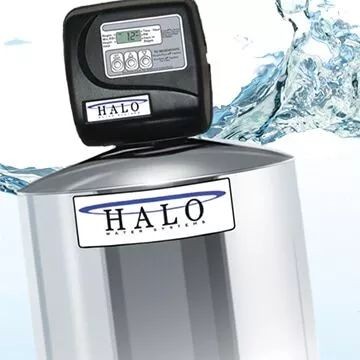PFAS Explained
The ‘forever chemicals’ in 99% of Americans
In 1946, DuPont introduced Teflon to the world, changing millions of people’s lives – and polluting their bodies. Today, the family of compounds including Teflon, commonly called PFAS, is found not only in pots and pans but also in the blood of people around the world, including 99 percent of Americans. PFAS chemicals pollute water, do not break down, and remain in the environment and people for decades. Some scientists call them “forever chemicals.”
In March, the Environmental Protection Agency proposed bold new limits for six PFAS in public water systems. The two best-studied and most notorious compounds – PFOA, once used in Teflon, and PFOS, formerly used in Scotchgard – would have a limit of 4 parts per trillion in drinking water. The chemicals PFNA, PFHxS, PFBS and GenX would be subject to a hazard index calculation to determine whether the levels of these PFAS pose a potential health risk.
Of tap water samples from 44 places in 31 states and the District of Columbia, only one location had no detectable PFAS, and only two other locations had PFAS below the level that independent studies show pose risks to human health. Some of the highest PFAS levels detected were in samples from major metropolitan areas, including Miami, Philadelphia, New Orleans and the northern New Jersey suburbs of New York City.
In 34 places where EWG’s (Environmental Woring Group) independent tests found PFAS, contamination has not been publicly reported by the Environmental Protection Agency or state environmental agencies. Because PFAS are not regulated, utilities that have chosen to test independently are not required to make their results public or report them to state drinking water agencies or the EPA.
BRUNSWICK COUNTY NORTH CAROLINA TESTED HIGHEST OF THE 44 LOCATIONS IN 31 STATES AND THE DISTRICT OF COLUMBIA WITH 185.9 PARTS PER TRILLION. WITH A EWG RECOMENDATION OF 1 PART PER TRILLION.

PFAS are used, often superfluously, in everyday products like nonstick cookware, carpets, food packaging, stain repellents, and water-resistant clothing. The synthetic compounds are also commonly found in firefighting foam and gear, which has led to the contamination of most military bases and airports. GenX, which DuPont began producing in 2009, is merely one of the many thousands of these “forever chemicals” that don’t break down in the environment and, instead, can bioaccumulate in the bodies of humans and wildlife. According to the Centers for Disease Control and Prevention (CDC), PFAS can be detected in the blood of nearly every American.
Although the human health impacts of PFAS are a relatively new area of study, a 2021 CDC report found that exposure to PFAS, even at very low levels, can cause thyroid problems, fertility issues, asthma, and more. Indeed, scientists suspect there is a possible thyroid cancer cluster in the Wilmington NC area, about 90 miles downstream from Chemours’ Fayetteville plant.

Emerging Contaminants & Drinking Water
As technology continues to evolve and improve, laboratories are able to identify and detect new compounds that were previously unknown. When found in the drinking water supply, these new chemicals are known as “emerging contaminants.”
Emerging contaminants create a challenge for drinking water providers because they are unregulated and little is known about their potential risks to human health and the environment.
There is no simple and inexpensive technology for removing PFAS from drinking water effectively. Selecting drinking water treatment options to remove PFAS typically requires a case-by-case evaluation to identify the best option.
Current options for drinking water treatment technologies to remove PFAS include granular activated carbon, ion exchange and reverse osmosis. Of these, granular activated carbon, or GAC, is the most common, with many water treatment facilities already using GAC to remove other contaminants. The design of the GAC filter and how often the carbon is exchanged can affect performance significantly. Some of the systems tested already use GAC filters, including the newly constructed site serving Chemours Fayetville NC Plant. Reverse osmosis is the most effective technology, but it is also the most expensive. Ion exchange is a newer technology for PFAS removal, with a limited number of current installations.
The type of PFAS present, such as long- or short-chain, their concentrations and the potential presence of other contaminants all are factors that determine which treatment technology will be most effective or appropriate. Studies have shown that perfluorinated sulfonates, such as PFOS, are more effectively removed than perfluoroalkyl acids, such as PFOA, and that longer-chain PFAS are more effectively removed by GAC than shorter-chain.
In the market, you can find a wide range of water filters with various options available. For efficient removal of PFAS from your water, Reverse Osmosis (RO) systems are highly regarded. However, it’s worth noting that RO systems are not cost-effective for whole-house applications. Alternatively, Activated Carbon Filters, Granular Activated Carbon Filters, Hybrid Filters and Ion Exchange Filters also offer effective solutions. Among these options, Activated Carbon and Granular Activated Carbon Filters are widely recognized and commonly used for PFAS removal in municipal water.
It is important to note that even with the implementation of reverse osmosis plants in Brunswick County, the water department will still need to add chlorine and bromine to ensure the safe delivery of drinking water to your home. The Halo 5 system effectively removes these chemicals, allowing you to avoid ingesting, bathing, showering, or brushing your teeth with them.
We encourage you to equip yourself with comprehensive knowledge. Engage in reading, investigate, and especially, ask the salesperson pertinent questions regarding the water filter they are promoting. Some key inquiries to consider include:
- Can you provide information about the maintenance requirements of this water filter?
- What type of media does this water filter employ to filter the water?
- Could you eleborate on the annual maintenance cost required to ensure its optimal performance?
- Is this water filter classified as one of the main types used to treat municipal water, namely Reverse Osmosis, Granular Activated Carbon, Hybrid or Ion Exchange?
Additionally, it is essential to ensure that the chosen water filter does not adversely affect your home’s existing water pressure. Inquire about the impact of the water filter on water pressure and confirm that it will not cause any disruptions to the water flow within your household plumbing system. This way, you can be confident that the water filter will seamlessly integrate into your home without compromising its water pressure and overall performance.
By arming yourself with this knowledge, you will be better equipped to make an informed decision about the most suitable water filter for your needs.
Whole House Water Filtration with Halo 5
We have opted for the Halo 5 whole house water filter and conditioning system. In addition to its GAC, HAC, AG Plus and HDG filtration methods, the Halo 5 system incorporates an ionizer that depolarizes the minerals in the water. This innovative feature prevents the accumulation of calcium and magnesium on plumbing fixtures, resulting in extended lifespans for faucets, water heaters, and other plumbing components. By effectively reducing scale buildup, the Halo 5 system offers comprehensive filtration and enhances the protection and maintenance of your plumbing fixtures all while raising the Ph level in your homes water and maintaining your current water pressure. We have found it to be the most efficient, cost effective Whole House water filter on the maket today.

